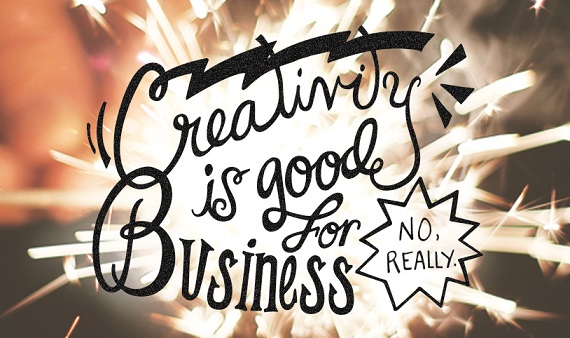 It’s the beginning of a new year. So, like you, I’m being bombarded by blog posts and articles about the marketing trends we’re all supposed to be thinking about. 2015 is the year CMOs and other marketing leaders should focus on technology. Or measurement. Or turning big data into actionable data. Or customer experience. Or finally making that digital transformation. The list goes on and on and on.
It’s the beginning of a new year. So, like you, I’m being bombarded by blog posts and articles about the marketing trends we’re all supposed to be thinking about. 2015 is the year CMOs and other marketing leaders should focus on technology. Or measurement. Or turning big data into actionable data. Or customer experience. Or finally making that digital transformation. The list goes on and on and on.
One thing that is not a trend, and shouldn’t be overlooked, is the importance of creativity in everything you do. Alan Iny of the Boston Consulting Group reiterated this point in a TED Talk. He spoke about all of these technology trends just getting you to the wrong place faster if you don’t start with creative thinking. “Creativity has never been more essential to competitiveness in the business world,” he said.
Then why are so many companies ignoring creativity?
Gayle Fuguitt, CEO of The Advertising Research Foundation (ARF), said, “We know that great effective advertising is driven 75 percent by great creative and 25 percent by media plans.” Yet an ARF survey found only 7 percent of advertisers take creative quality into account in their models.
That’s a real business problem. Because companies that foster creativity are 3.5 times more likely than their peers to achieve revenue growth of 10 percent or more, according to a recent Forrester Research, Inc., study.
Successful companies are embracing creativity.
Some of the most successful business and marketing leaders in the world truly understand the importance of creativity.
Dana Anderson, senior vice president and CMO at Mondelēz International, said, “Great creative is more effective, it’s been proven over and over again.” When reviewing creative campaigns, she pushes her team to not judge it by what has been done before at her company or just within the category, but rather, she says, “Let’s look at our work relative to great work in the world.”
Beth Comstock, senior vice president and CMO at General Electric Co., said, “In marketing, we resolved to fuel innovation and to make our own efforts as creative and valuable as the products coming out of our R&D labs.”
So how can you be more creative?
After nearly 20 years of helping companies of all sizes and across all categories find their inner creativity, I’ve noticed some common factors that could help you find yours. Here are three to get you started:
Have a startup state of mind.
It’s been an interesting few months for me. I’ve been on a team working closely with a startup company. You learn quickly that the standard rules, conventions and guidelines of a large, established business just don’t apply. And that’s great. Decisions are made quicker. Collaboration is paramount. And risks are taken daily. Thinking creatively isn’t just done for fun — it’s a necessity in this environment. And the results are amazing. So the next time you’re faced with a challenge that needs creative problem-solving, don’t ask how your company would normally approach it. Ask what you’d do if you started the company today. You’re thinking is bound to be much more creative and innovative.
Don’t mistake a committee or consensus for collaboration.
Collaboration is an absolutely essential element of the creative process. It can’t happen without it. When people work together using their collective experiences, creativity thrives. But that doesn’t mean creativity is a democracy. The more creative a solution is, the tougher the decision becomes to approve it. That’s why companies form committees, where several people are “in charge” of making the decision. In my career, I’ve never seen anything kill creativity faster than a committee. That’s because it’s not collaboration. It’s just risk mitigation and consensus-seeking. And one thing’s for certain: If you’re not taking risks, or if you’re trying to make everybody happy, you’re definitely not making creative decisions. A simple rule of thumb to remember is that if everybody loves it, it’s probably not creative enough.
Bring in the creative thinkers early.
It always amazes me how many marketing leaders often view creative people as just people who play with colors and words. And these creatives are only invited into the conversation after all the important business challenges are figured out. Every creative has been told countless times to just “make it look pretty.” Yet we’re trained professionals in the art of creative problem-solving. Not just making ads. I’m lucky. At my agency, the creative teams help to solve all levels of challenges, from competitive positioning and portfolio strategies to business plans and sales channel approaches. That’s because we recognize that creative people are built to challenge norms and look at things differently. Our creativity is innate, so we can help push others to unleash their inner creativity, too. So the next time you’re in a room discussing an important business challenge, look around to make sure the creative thinkers on your team are there, too.
The blog posts and articles probably will never settle on which marketing trends we should all follow in 2015. Like every year, it’s hard to predict which path is most likely to lead to business success. Except maybe for the creative path. Because as Ed Catmull, a co-founder of Pixar Animation Studios, said, “The unpredictable is the ground on which creativity occurs.”
Written by Mike Fredrick, Vice President, Creative Director at Bader Rutter


